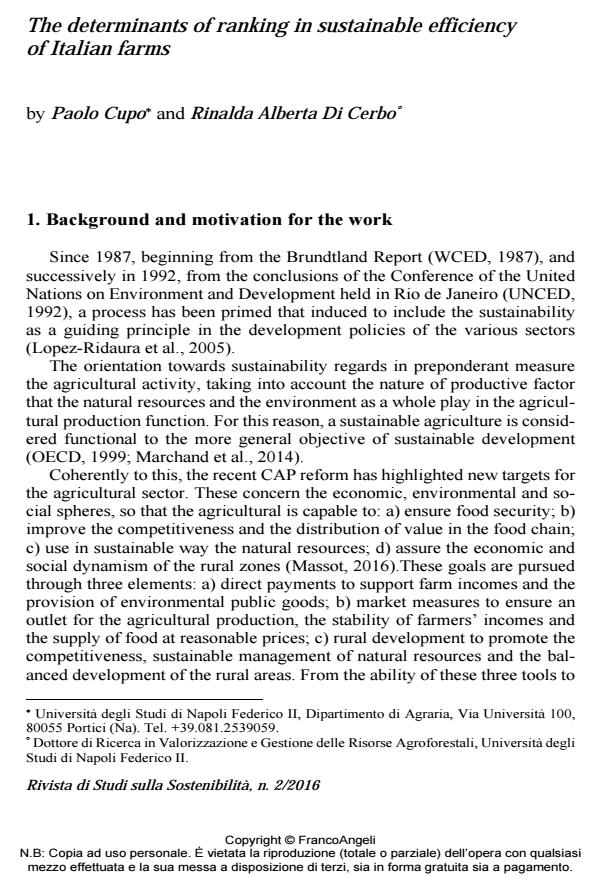The determinants of ranking in sustainable efficiency of Italian farms
Journal title RIVISTA DI STUDI SULLA SOSTENIBILITA'
Author/s Paolo Cupo, Rinalda Alberta Di Cerbo
Publishing Year 2017 Issue 2016/2
Language English Pages 19 P. 141-159 File size 347 KB
DOI 10.3280/RISS2016-002013
DOI is like a bar code for intellectual property: to have more infomation
click here
Below, you can see the article first page
If you want to buy this article in PDF format, you can do it, following the instructions to buy download credits

FrancoAngeli is member of Publishers International Linking Association, Inc (PILA), a not-for-profit association which run the CrossRef service enabling links to and from online scholarly content.
This study individuates the determinates of the farms’ sustainability following the approach based on the concept of sustainable value formulated by Figge and Hann (2004), which integrates the environmental, economic and social components into a single monetary indicator that takes into account the opportunity cost of the resources used defined by a benchmark. The results of the GLM regression show that almost all the structural characteristics have a significant impact on the sustainable efficiency of the farms, while the specialized farms perform better than mixed farms like the young and male farmers. Moreover, the highly significant and positive coefficients of correlation between the three components of sustainability, demonstrate that no trade-off exists between them.
Keywords: Sustainability, efficiency, ranking, capital, opportunity cost, benchmark
- INTERDEPENDENCE OF ECONOMIC AND ENVIRONMENTAL EFFICIENCY IN AGRICULTURE IN THE EUROPEAN UNION Jakub Staniszewski, Andrzej Czyżewski, in Acta Scientiarum Polonorum. Oeconomia /2018 pp.159
DOI: 10.22630/ASPE.2018.17.4.63
Paolo Cupo, Rinalda Alberta Di Cerbo, The determinants of ranking in sustainable efficiency of Italian farms in "RIVISTA DI STUDI SULLA SOSTENIBILITA'" 2/2016, pp 141-159, DOI: 10.3280/RISS2016-002013